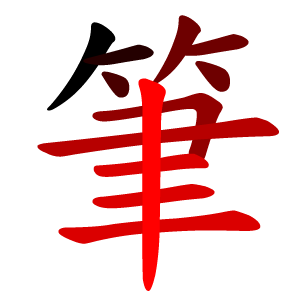 W
WAn alphabet is a standardized set of basic written symbols or graphemes that represent the phonemes of certain spoken languages. Not all writing systems represent language in this way; in a syllabary, each character represents a syllable, for instance, and logographic systems use characters to represent words, morphemes, or other semantic units.
 W
WPoles adopted the Latin alphabet in the 12th century. This alphabet, however, was ill-equipped to deal with Polish phonology, particularly the palatal consonants, the retroflex group as well as the nasal vowels. Consequently, Polish spelling in the Middle Ages was highly inconsistent as writers struggled to adapt the Latin alphabet to the needs of the Polish language. There was no unified system; different writers came up with different systems before the modern Polish orthography was firmly established.
 W
WA homograph is a word that shares the same written form as another word but has a different meaning. However, some dictionaries insist that the words must also be pronounced different, while the Oxford English Dictionary says that the words should also be of "different origin". In this vein, The Oxford Guide to Practical Lexicography lists various types of homographs, including those in which the words are discriminated by being in a different word class, such as hit, the verb to strike, and hit, the noun a blow.
 W
WHumanist minuscule is a handwriting or style of script that was invented in secular circles in Italy, at the beginning of the fifteenth century. "Few periods in Western history have produced writing of such great beauty", observes the art historian Millard Meiss. The new hand was based on Carolingian minuscule, which Renaissance humanists, obsessed with the revival of antiquity and their role as its inheritors, took to be ancient Roman:[W]hen they handled manuscript books copied by eleventh- and twelfth-century scribes, Quattrocento literati thought they were looking at texts that came right out of the bookshops of ancient Rome".
 W
WLateral masking is a problem for the human visual perception of identical or similar entities in close proximity. This can be illustrated by the difficulty of counting the vertical bars of a barcode.
 W
WLetter case is the distinction between the letters that are in larger uppercase or capitals and smaller lowercase in the written representation of certain languages. The writing systems that distinguish between the upper and lowercase have two parallel sets of letters, with each letter in one set usually having an equivalent in the other set. The two case variants are alternative representations of the same letter: they have the same name and pronunciation and are treated identically when sorting in alphabetical order.
 W
WLetter case is the distinction between the letters that are in larger uppercase or capitals and smaller lowercase in the written representation of certain languages. The writing systems that distinguish between the upper and lowercase have two parallel sets of letters, with each letter in one set usually having an equivalent in the other set. The two case variants are alternative representations of the same letter: they have the same name and pronunciation and are treated identically when sorting in alphabetical order.
 W
WReading is the process of taking in the sense or meaning of letters, symbols, etc., especially by sight or touch.
 W
WRomanization or romanisation, in linguistics, is the conversion of text from a different writing system to the Roman (Latin) script, or a system for doing so. Methods of romanization include transliteration, for representing written text, and transcription, for representing the spoken word, and combinations of both. Transcription methods can be subdivided into phonemic transcription, which records the phonemes or units of semantic meaning in speech, and more strict phonetic transcription, which records speech sounds with precision.
 W
WThere is no standard variety of Scottish Gaelic; although statements below are about all or most dialects, the north-western dialects are discussed more than others as they represent the majority of speakers.
 W
WStroke order is the order in which the strokes of a Chinese character are written. A stroke is a movement of a writing instrument on a writing surface. Chinese characters are used in various forms in Chinese, Japanese, Korean and formerly Vietnamese. They are known as Hanzi in (Mandarin) Chinese, kanji in Japanese (かんじ), Hanja in Korean (한자) and Chữ Hán in Vietnamese. Stroke order is also attested in other logographic scripts, e.g. cuneiform.
 W
WReading is the process of taking in the sense or meaning of letters, symbols, etc., especially by sight or touch.